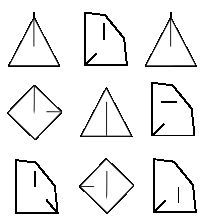Chapter Five
Victor was nearing retirement when the rover finally reached Pluto. Since then space-faring technology had advanced by leaps and bounds, mainly driven by the discovery. There was an infrared telescope on the far side of the moon, a manned mission soon to enter the Martian atmosphere, and yes, a much anticipated manned mission planned for Pluto. Of course the latter wouldn't be seen in his lifetime. Even the rover would be trapped on Pluto for another 200 years as it drifted out beyond Neptune's orbit to the Kuiper Belt. But for now Victor was able to watch the rover trundle towards that now-famous cylindrical cone which dwarfed every other feature around.
Everyone watched excitedly as the cameras panned back and forth, taking in every possible detail.
The images were all black and white, the sun being too weak to provide any color contrast worth noting. There were three large monitors displaying images from each of the cameras. The two forward cameras providing a binocular scene in the visual range, and one rear-facing camera showing an x ray feed in the hopes that some clues could be teased out from below.
The scene looked like horror movie images of a post-apocalyptic land. The ground was nearly barren in every direction with bits of artificial clues here and there. One looked like the twisted truss-like boom of a crane, another was a long flattened cylinder that almost resembled a submarine without a conning tower. But most peculiar of all were the huge rectangular spaces of pure utmost

black. Van Nyen, the rover operator, carefully teased the vehicle to the edge, keeping the speed slower then a snail's pace. It took almost nine hours for signals to travel from the rover to Earth and back. So with almost a billion Yen riding on the mission, everyone was taking it with utmost care.
Finally it reached the edge and she directed it to flash a laser rangefinder into it. The cavern was the size of a small island and over 100 meters deep.
Finally Nyen was ordered to direct the vehicle towards the biggest prize, the chimney itself, as it was dubbed. The cameras panned left, right and up looking at detail on all sides. The surface was perfectly smooth from the ground to as far up as they could see. It was also exactly cylindrical to within a few millimeters. The closest analogy anyone could come up with was the turret of an immense warship. With the same painstaking stoicism, the rover crawled along the perimeter in a wide arc, looking for anything else of note.
It was only after it had traveled almost a complete circle around that Roger heard Li Tang, the director call out “Stop! Pan down.” His voice was pregnant with emotion and excitement which was completely out of character for the man. “Right there. Zoom in please.”
Then they all saw it. Just above the Plutonian soil was a rectangular shape projecting a few centimeters from the surface.
“Can you remove some of that dust please?”
The operator moved some controls while everyone watched with baited breath. The anticipation in the dead silent room was palpable. As the millimeters of soil fell away, the shape began to grow. It took a long while for people to breathe again after the shock of processing what they were looking at. There, a billion kilometers from Earth were a series of
shapes etched into the surface in three rows of perfectly
straight lines.
The shapes were arranged seemingly at random, but all
remained precisely within those three rows.
Like Victor's original discovery decades earlier, this new
element brought another firestorm of chatter as the first ever
extra-terrestrial language was announced. Li Tang was a
much more skilled bureaucrat, and gave specific credit both to
the rover team, NASA, and Victor's team who had made this
mission possible. The news brought a whole new eruption of
podcasts, speculative theories, and experts.




